EuCheMS Brussels News Update, Dec 2014
<iframe frameborder="0" scrolling="auto" width="100%" height="800px" src="http://us6.campaign-archive2.com/?u=c4a58424d8652d1465429bd26&id=567753c2c0&e=fa5d4ad9f0"></iframe>
Welcome letter from the new EuCheMS President: Prof. David Cole-Hamilton
Dear EuCheMS Member,
I have just taken over as President of EuCheMS from Ulrich Schubert who did a great job in expanding the Secretariat, moving it to a fine location nearer the premises of the European Institutions, designing a new constitution, which has just been signed into law and developing strong links with the European Parliament and Commission through Nineta H. Majcen, EuCheMS General Secretary.
Ulrich will surely be a very hard act to follow, but I am determined to continue to build the influence of EuCheMS as the independent voice for chemistry in Europe.
I also want to work closely with the EuCheMS Divisions/Working Parties to build a strong network that can act proactively and respond nimbly and authoritatively to requests from the Parliament and Commission, and that will continue to strengthen their excellent conferences and other activities.
The European Chemistry Congresses have got off to a very good start, but I plan to make them a must for all chemists in Europe and a reference to the world of chemistry. The next ones are in Seville, 201 6, and Liverpool, 201 8. I very much look forward to welcoming you at these Congresses.
I hope that EuCheMS will be able to celebrate European chemistry with a series of prestigious European prizes both across the EuCheMS Divisions/Working Parties and from the EuCheMS as a whole. The European Sustainable Chemistry Award has already become a beacon for environmental friendly European Chemistry research.
With the help of every one of you, I am certain that we can make EuCheMS the voice to be heard for all matters to do with chemistry in Europe.
Please see below to see what EuCheMS does for you and what YOU can do for EuCheMS.
Please join me on this very exciting journey by signing up here.
 With all good wishes,
With all good wishes,
David Cole-Hamilton
EuCheMS President
“Europe should be a chemical-free zone”
Ifyouwant to change this common unscientificmisconception, then EuCheMSis forYOU!
What EuCheMS does for YOU
- Acts as a single independent voice for Chemistry in Europe
- Advices the European Parliament and Commission on chemistry topics
- Promotes excellence in European research via continuous collaboration with the European Research Council
- Ensures that chemistry is well represented in European projects
- Responds to a variety of consultations from the European institutions on chemistry topics, such as water, phosphorus, mercury
- Runs the biennial European Chemistry Congress
- Has Divisions and Working Parties which run biennial conferences and summer schools in most areas of chemistry as well as other activities
- Has an extremely active and effective Young Chemists Network (EYCN)
- Awards a range of European prizes and lectureships for Chemistry
- Together with the European Chemistry Thematic Network Association (ECTN),
- promotes high quality teaching of chemistry in European universities
What YOU can do for EuCheMS
- Get involved with a EuCheMS Division or Working Party
- Get involved in the European Young Chemists’ Network
- Be prepared to offer expert advice when needed, such as for public consultations
- Promote EuCheMS and the role of chemistry whenever appropriate
- Share with us what is relevant for you
Join us in co-creating The Voice for Chemistry in Europe via on-line request at www.surveymonkey.com/s/euchemsform
EuCheMS Brussels News Update, Nov 2014
<iframe frameborder="0" scrolling="auto" width="100%" height="800px" src="http://us6.campaign-archive2.com/?u=c4a58424d8652d1465429bd26&id=b0839ade8b&e=fa5d4ad9f0"></iframe>
SCS Award Winners 2015
It’s our pleasure to announce the winners of the 2015 SCS awards.
We would like to sincerely congratulate all prize winners and are looking forward to the ceremonies that will take place at one of your events during the next year.
Werner Prize 2015
CHF 10,000 and medal in bronze
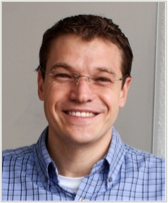 |
The prize is given to Prof. Gilles Gasser, University of Zurich for his outstanding contributions in the field of medicinal inorganic chemistry and of inorganic chemical biology. The prize if given on the occasion of the SCS Spring Meeting in Basel on April 24, 2015. |
Grammaticakis-Neumann Prize 2015
CHF 5,000
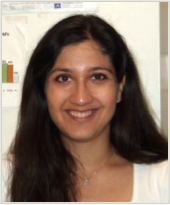 |
The prize is awarded to Prof. Natalie Banerji, University of Fribourg for her studies providing insight into photophysical processes of polymeric semiconductors. The prize is given on the occasion of the SCS Fall Meeting in Lausanne on September 4, 2015. |
Sandmeyer Award 2015
CHF 20,000
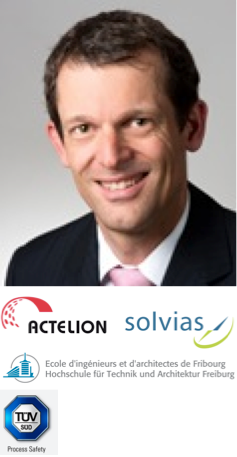 |
The Award 2015 is given to the Team comprising researchers from Actelion Pharmaceuticals, Solvias, Swissi Process Safety, and the Universities of Applied Sciences of Zurich and Fribourg , namely,
for the conception and successful scale-up of Diels–Alder reactions and organocatalysis leading to enantiomerically pure 5-phenylbicyclo[2.2.2]oct-5-en-2-one, a key intermediate for the production of an L/T calcium channel antagonist. The award lecture is given on the occasion of the 12. Freiburger Symposium in Fribourg on April 23./24., 2015. |
Balmer Prize 2015
CHF 2,000 for the winner and medal in bronze plus CHF 2,000 for the chemistry depatment of the school.
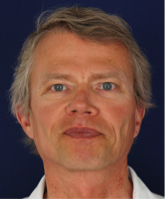 |
The prize is given to Mr. Francis Mingard, Gymnase de Nyon for the development of didactic chemistry experiments and for making them available on the web. The prize is given on the occasion of the central education course for science teachers, organized by the VSN in Schaffhausen on October 14-16, 2015. |
Dr. Max Lüthi Award 2015
CHF 1,000 and medal in bronze
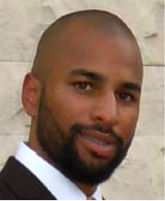 |
The award is attributed to Mr. Yvan Mongbanziama, HEIA Fribourg for his Bachelor thesis describing the synthesis and characterization of a new enantiomerically pure verdazyl radical derived from pinene. The prize is given on the occasion of the SCS Fall Meeting in Lausanne on September 4, 2015. |
Berne, November 12, 2014
David Spichiger, Executive Director
Swiss Chemical Society SCS
/ www.scg.ch/awards
David Spichiger, SCS
12.11.2014
SCNAT-Newsletter November 2014
|
SCNAT-Newsletter
November 2014
|
|
|
NEWS
Jahreskongress 2014 der SCNAT
Neuer Geschäftsleiter der Platform Chemistry
Factsheet „Energiepolitik und Klimaschutz mit Luftreinhaltung verbinden“
HOTSPOT 30: Ökosystemleistungen
Rigi-Workshop 2016 – Ausschreibung für Gesellschaften
Wettbewerb Science on Stage Switzerland für Lehrkräfte
Winterprogramm der Naturwissenschaftlichen Gesellschaft Winterthur |
|
Nicht verpassen 12. September 2014 bis 30. März 2015, Anatomisches Museum Basel, Pestalozzistrasse 20
Dem Körper auf der Spur. Von Andreas Vesal bis heute –500 Jahre Interaktiv und in die virtuelle Welt eintauchend, bietet diese Ausstellung eine Reise durch die wechselvolle Geschichte der Anatomie mit ihren Höhen und Tiefen. Sie können hier eine Auswahl von Bildern, Objekten und Zeugnissen der Vergangenheit und Gegenwart, zwischen Kunst und Wissenschaft, zwischen Medizin und Gesellschaft entdecken. Im Mittelpunkt steht das Wirken des Arztes Andreas Vesalius (1514-1564), einer der Begründer der modernen Anatomie, dessen 500. Geburtstag 2014 gefeiert wird. Alte Werke bis hin zu den neuesten Bildgebungs-Technologien, anatomische Präparate oder virtuelle Installationen laden Sie ein, durch die zahlreichen Spiegel unseres inneren Körpers zu gehen. http://anatomie.unibas.ch/museum 21. - 22 November 2014, Fribourg
12th Swiss Geoscience Meeting: Drilling the Earth 26. November 2014, 12:30 bis 18:00 Uhr, Naturhistorisches Museum Bern, Bernastrasse 15
Bienen im Fokus der Wissenschaft und Politik 16. Januar 2015, UniS, Bern
SWIFCOB 15 «Biodiversität und Politik: Vielfalt bewegt» Biodiversität ist in der Politik in den letzten 20 Jahren zum Thema geworden – auf internationaler und nationaler Ebene, aber auch in den Kantonen und Gemeinden. Sie steht allerdings selten im Zentrum, und meistens unterliegen Bemühungen für die Erhaltung der Biodiversität bei Interessensabwägungen. Wie kommen politische Entscheidungen zustande, und welches sind die Mechanismen und Möglichkeiten, bei diesen Entscheidungen Biodiversitätsaspekte einzubringen? Diesen Fragen geht die Tagung SWIFCOB 15 «Biodiversität und Politik: Vielfalt bewegt» des Forum Biodiversität Schweiz vom 16. Januar 2015 in Bern nach. Anhand von konkreten Beispielen wird diskutiert, wie es gelingen kann, die Erhaltung, Förderung und nachhaltige Nutzung der Biodiversität verstärkt im Tagesgeschäft der verschiedenen politischen Sektoren zu verankern. 27. Januar 2015, UniS, Schanzeneckstrasse 1, Bern
Vorankündigung: Neue Pflanzenzuchtverfahren – Nutzen und Herausforderungen 29. - 30. Januar 2015, Universität Zürich, Campus Irchel
Wilkommen zum LS2 Annual Meeting 2015!
Kontakt und Impressum |
Page 139 of 299
